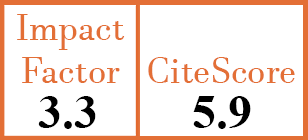Full Papers
Mental health and well-being during the COVID-19 pandemic: stress vulnerability, resilience and mood disturbances in fibromyalgia and rheumatoid arthritis
C. Iannuccelli1, B. Lucchino2, C. Gioia3, G. Dolcini4, M. Favretti5, D. Franculli6, M. Di Franco7
- Rheumatology Unit, Department of Internal Clinical, Anaesthesiologic and Cardiovascular Sciences, Sapienza University of Rome, Italy.
- Rheumatology Unit, Department of Internal Clinical, Anaesthesiologic and Cardiovascular Sciences, Sapienza University of Rome, Italy. bruno.lucchino@uniroma1.it
- Rheumatology Unit, Department of Internal Clinical, Anaesthesiologic and Cardiovascular Sciences, Sapienza University of Rome, Italy.
- Rheumatology Unit, Department of Internal Clinical, Anaesthesiologic and Cardiovascular Sciences, Sapienza University of Rome, Italy.
- Rheumatology Unit, Department of Internal Clinical, Anaesthesiologic and Cardiovascular Sciences, Sapienza University of Rome, Italy.
- Rheumatology Unit, Department of Internal Clinical, Anaesthesiologic and Cardiovascular Sciences, Sapienza University of Rome, Italy.
- Rheumatology Unit, Department of Internal Clinical, Anaesthesiologic and Cardiovascular Sciences, Sapienza University of Rome, Italy.
CER14782
2021 Vol.39, N°3 ,Suppl.130
PI 0153, PF 0160
Full Papers
Free to view
(click on article PDF icon to read the article)
PMID: 34161226 [PubMed]
Received: 05/05/2021
Accepted : 21/05/2021
In Press: 21/06/2021
Published: 21/06/2021
Abstract
OBJECTIVES:
The COVID-19 pandemic severely increased the stress levels in the population. The aim of present study was to investigate the impact of the lockdown measures on emotional well-being and disease activity in patients with fibromyalgia (FM) and rheumatoid arthritis (RA) through a telemedicine approach.
METHODS:
An on-line survey, including demographic characteristics, disease-activity and psychometric scales (Stress-related Vulnerability Scale, Resiliency scale), Zung Anxiety and Depression Self-assessment Scale), was anonymously administered to FM, RA and healthy controls (HC). Disease activities were compared to the pre-lockdown cohort referring to our centre.
RESULTS:
Levels of anxiety and depression worthy of psychiatric attention were documented in 36.7% of FM, 14.6% of RA, 12.5% of HC and in 50% of FM, 17.1% of RA, 15% of HC, respectively. HC featured the highest stress scores, followed FM and then RA. RA showed higher resiliency than FM. Both anxiety and depression scores were significantly higher in FM than RA and HC. Disease severity was higher in RA patients and lower in FM patients when compared to the respective historical cohorts.
CONCLUSIONS:
Lockdown significantly affected emotional well-being and disease activity of patients suffering from rheumatic diseases. While HC showed a higher vulnerability to stress, RA patients showed a greater resilience compared to both HC and to FM patients, especially. Emotional disturbances are greater in patients with RDs and in particular with FM. The use of a telemedicine approach to screen for severe symptoms represents a useful addition to the overall management of rheumatic patients.


